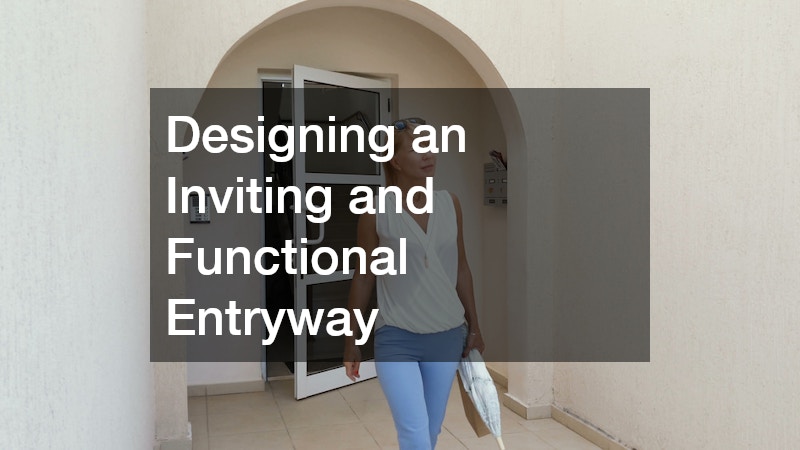Your first year in a new home is a time filled with excitement, adjustment, and learning. As you settle into new routines and uncover the unique qualities of your property, you begin to understand what it needs to feel safer, more comfortable, and better prepared for long-term living. Many homeowners spend this first year addressing immediate repairs, planning future upgrades, and getting familiar with the neighborhood and local resources. The more intentional you are during this timeframe, the faster your home becomes a space that truly reflects your lifestyle. From understanding maintenance priorities to identifying potential safety issues, the first year offers valuable insight into how your property functions. Taking a proactive approach can prevent small concerns from turning into larger problems down the road. This guide walks you through practical steps and thoughtful strategies that support long-term well-being. By focusing on safety enhancements, infrastructure improvements, routine upkeep, and early planning, you can transform your home into a resilient, beautiful, and deeply comfortable environment. With steady attention and informed decision-making, the first year becomes a foundation for a secure future and a home you can treasure for many years.
Enhancing Property Boundaries and Outdoor Security
Securing your property is a key priority during your first year of homeownership, and addressing boundary structures is an important first step. Many new homeowners consult fencing companies to help create safe and defined outdoor spaces that improve both privacy and protection. A well-designed fence enhances curb appeal, keeps children and pets secure, and acts as a buffer between your property and neighboring lots. When moving into a new home, it’s common to discover areas where older fences need repairs due to age or weather exposure. Taking time early on to evaluate these conditions helps prevent future issues like leaning posts or deteriorating panels. Beyond physical barriers, addressing visibility matters as well. Outdoor lighting, trimmed landscaping, and clear entry paths help discourage unwanted access while improving nighttime safety. Many families also take this time to map out potential additions to their yard, such as gardens, play spaces, or storage areas, and proper fencing often supports those plans. Thinking proactively about security during your first year ensures your home feels protected, welcoming, and well-maintained. With proper planning, the right fencing solutions create a long-lasting foundation for outdoor confidence.
Designing an Inviting and Functional Entryway

A home’s entryway sets the tone for the entire property, and new homeowners often focus on enhancing this area for improved functionality and style. Many consider installing custom gates to create a more distinctive, secure, and visually appealing entrance that reflects the home’s personality. An upgraded entryway boosts both convenience and safety, especially if your home sits near a busy road or on a larger parcel of land. Beyond aesthetics, a thoughtful entry design should prioritize easy access for residents and guests while restricting entry to unwanted visitors. Homeowners may also use this time to evaluate walkways, porch lighting, door hardware, and landscaping to ensure the area is well-lit and free of hazards. Adjustments like motion-activated lights, weather-resistant materials, and clear pathways contribute to a more welcoming environment. Even minor improvements—such as adding seating or planting seasonal flowers—can transform the entire look of your home’s exterior. By giving attention to both practical needs and decorative elements, you establish a more organized and harmonious transition from the outside world into your living space. The entryway is your home’s first impression, and investing in its design provides long-term comfort and peace of mind.
Planning Smart Interior Upgrades for Daily Comfort
One of the most rewarding parts of your first year as a homeowner is the opportunity to make interior improvements that elevate comfort and functionality. For many households, a bathroom remodel becomes a top priority, especially if fixtures are outdated, storage is limited, or ventilation is inadequate. Upgrading this space can significantly improve your daily routines while increasing your property’s long-term value. A well-planned project might include improved lighting, enhanced water efficiency, modern tile work, or expanded cabinetry. These improvements not only refresh your living environment but also help reduce moisture issues that often develop in older bathrooms. In addition to aesthetic enhancements, focusing on structural aspects—like proper ventilation or updated plumbing—ensures long-lasting results and greater home safety. This is also an ideal time to evaluate other areas of your home for future remodeling projects, whether it’s updating flooring, refreshing paint colors, or improving energy efficiency. Your first year offers valuable insight into how each room functions, allowing you to design renovations that suit your lifestyle. By identifying what matters most, you can build a long-term improvement plan that strengthens both comfort and property value.
Managing Overgrowth and Protecting Your Long-Term Landscape Health

Your new property’s landscape requires careful attention during the first year, as overgrowth, storm damage, and aging vegetation can pose safety risks or reduce curb appeal. Many homeowners partner with tree removal companies to address hazardous or dying trees that could fall during severe weather or cause structural damage to nearby buildings. Assessing tree health early reduces long-term risk and supports a healthier overall environment. Overgrown roots, leaning trunks, and branches that hang over roofs or power lines need immediate evaluation to prevent potential emergencies. It’s also a good time to consider how your yard will evolve. Removing an unsafe tree may open opportunities for new shade plants, flower beds, or outdoor spaces. Additionally, addressing tree concerns early in the homeownership journey ensures your landscape remains vibrant and manageable for years to come. Whether planning a redesigned garden or maintaining a clean yard for children and pets, prioritizing tree management provides peace of mind. Taking proactive steps prevents costly problems and allows your outdoor spaces to thrive in alignment with your long-term goals.
Protecting Your Home From Hidden Moisture and Air Quality Hazards
Maintaining your home’s indoor air quality is essential, especially during your first year when you are still getting familiar with potential problem areas. One of the most serious and often unexpected hazards homeowners face is moisture intrusion, which can lead to structural damage and health risks. Addressing issues early helps prevent bigger problems, such as the need for professional black mold remediation if mold growth becomes severe. Identifying moisture sources—whether from roof leaks, plumbing issues, or poor ventilation—is a crucial part of early home care. A thorough inspection helps you understand where humidity tends to accumulate, allowing you to take proactive steps such as improving airflow, sealing gaps, or upgrading insulation. Homeowners should also monitor bathroom fan function, check attic ventilation, and repair minor leaks immediately. Maintaining a dry, clean environment supports better respiratory health for your family and protects your home’s long-term structural integrity. The first year is the perfect time to establish these habits and ensure the entire home remains safe and comfortable.
Preserving Trees, Preventing Hazards, and Strengthening Your Landscape

Healthy trees are valuable assets to any property, offering shade, beauty, and environmental benefits. During your first year in a new home, assessing the condition of your trees is an important step in long-term landscape maintenance. Consulting an arborist can help you determine whether your trees are structurally sound, properly watered, and free from pests or diseases. These professionals evaluate root health, branch stability, and overall growth patterns to identify potential hazards. Tree assessments also help you plan future landscaping projects, as knowing which trees are healthy allows you to design gardens, patios, or outdoor living spaces that complement your property. Regular tree care prevents falling branches, reduces storm damage, and preserves the natural beauty of your yard. By prioritizing tree health early, homeowners create safer outdoor environments for children, visitors, and pets. Long-term landscape management begins with knowledge, and professional guidance can help you make informed decisions that support both safety and aesthetics for years to come.
Planning Major Home Expansions and Structural Improvements
Some homeowners enter their first year imagining long-term improvements that maximize available space and support lifestyle changes. Whether dreaming of a larger kitchen, additional bedrooms, or a finished lower level, early planning sets the stage for successful upgrades. Many families consult basement and addition remodelers to evaluate possibilities, determine structural requirements, and map out potential timelines. These experts help assess how new spaces can integrate seamlessly into the existing footprint of your home while supporting functionality and style. Even if you do not intend to build immediately, understanding the feasibility of future expansions allows you to budget, schedule, and mentally prepare for the work ahead. Planning early also helps you prioritize smaller upgrades that align with long-term goals. For example, understanding future layout changes may influence flooring choices, wall placements, or electrical needs. By taking time during your first year to envision how your home will evolve, you create a thoughtful roadmap for meaningful improvements that add value and convenience over time.
Incorporating Outdoor Recreation and Property Enhancements

Many new homeowners look for ways to enhance outdoor living spaces and create areas for relaxation, entertainment, and recreation. Some families dream of installing inground swimming pools as a long-term feature that offers enjoyment, aesthetic appeal, and potential value increases. Before planning such an addition, homeowners should evaluate available yard space, sun exposure, drainage patterns, and long-term maintenance expectations. Considering these factors early helps determine whether a pool aligns with your property goals and lifestyle. Beyond recreational upgrades, this first year is also the perfect time to assess other outdoor additions, such as patios, seating areas, fire pits, or garden beds that contribute to everyday enjoyment. Creating pleasant outdoor spaces encourages healthier living, more time spent outside, and greater connection with family and friends. Whether planning small improvements or envisioning larger recreational features, the first year offers a unique opportunity to design outdoor areas that truly enhance the home experience and support long-term well-being.
Addressing Yard Safety and Maintaining a Clean, Usable Outdoor Space
Maintaining a safe and well-kept yard is an important responsibility for new homeowners, especially if your property includes older trees or extensive plant growth. After trees are removed or trimmed, many families rely on a stump grinding company to eliminate stumps that can become tripping hazards or attract pests. Removing these obstacles helps create smoother walking areas and clearer lines of sight throughout the yard. Clean, open spaces are easier to maintain and offer more flexibility for future landscaping projects. This is also a good time to evaluate soil health, plant placement, drainage patterns, and irrigation systems. Identifying and addressing issues early supports healthier grass, stronger plants, and reduced maintenance down the line. A well-maintained yard not only improves curb appeal but also enhances overall safety, especially for households with active children or pets. By focusing on cleanliness and safety during the first year, homeowners lay the groundwork for a beautiful outdoor environment that remains functional and enjoyable year after year.
Ensuring a Safe Living Environment Through Hazard Awareness
Understanding potential environmental hazards within your new home is a critical part of long-term wellness and safety. Older homes may contain materials that require careful handling, particularly if renovations or structural changes are planned. During the first year, many families seek professional guidance for local asbestos removal if they discover insulation, floor tiles, or other components that may contain hazardous materials. Addressing these issues early prevents exposure risks and ensures renovations can proceed safely. Homeowners should also learn about other environmental concerns such as radon, lead paint, or outdated electrical systems that may pose safety challenges. Conducting a comprehensive home inspection soon after moving in provides valuable insight into the property’s condition and helps you prioritize improvements. Staying informed about environmental hazards not only protects your household but also contributes to long-term property value. Taking proactive steps early ensures your home remains a safe and healthy place to live for many years.
Your first year as a homeowner offers countless opportunities to shape your property into a safe, comfortable, and personally meaningful space. By taking time to evaluate structural needs, plan long-term improvements, and care for both indoor and outdoor areas, you build a foundation that supports your lifestyle for years ahead. Whether addressing immediate concerns such as safety hazards or dreaming about future renovations, each decision you make contributes to your home’s long-term strength and value. Proactive planning, regular maintenance, and thoughtful design lay the groundwork for a living environment that grows with your needs and supports your family’s well-being. This is the time to learn about your home, understand its systems, and discover the potential within every room and outdoor space. With care and intention, your first year becomes the beginning of a fulfilling and rewarding homeownership journey filled with comfort, confidence, and lasting satisfaction.